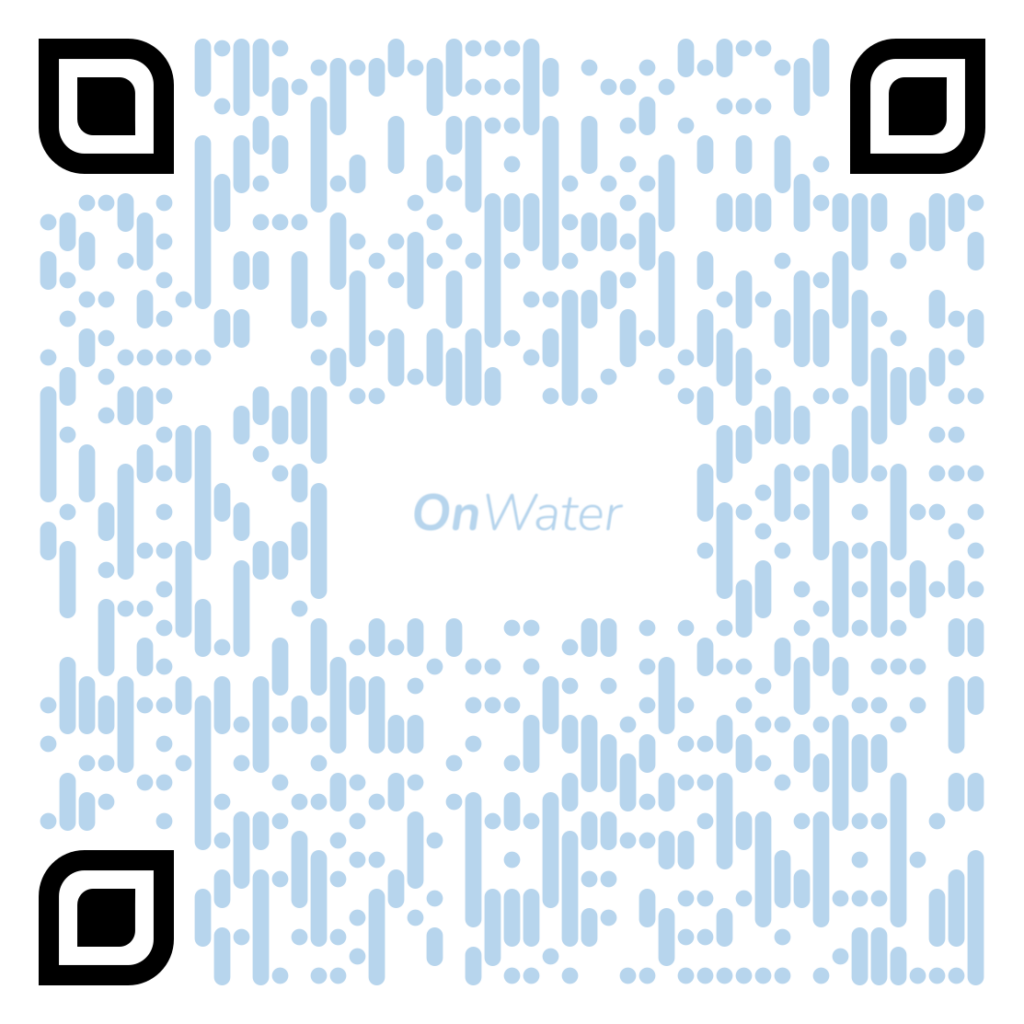On Water
Conscious water based ecosystem where water is valued as a public good
“We forget that the water cycle and the life cycle are one”
Jacques Cousteau
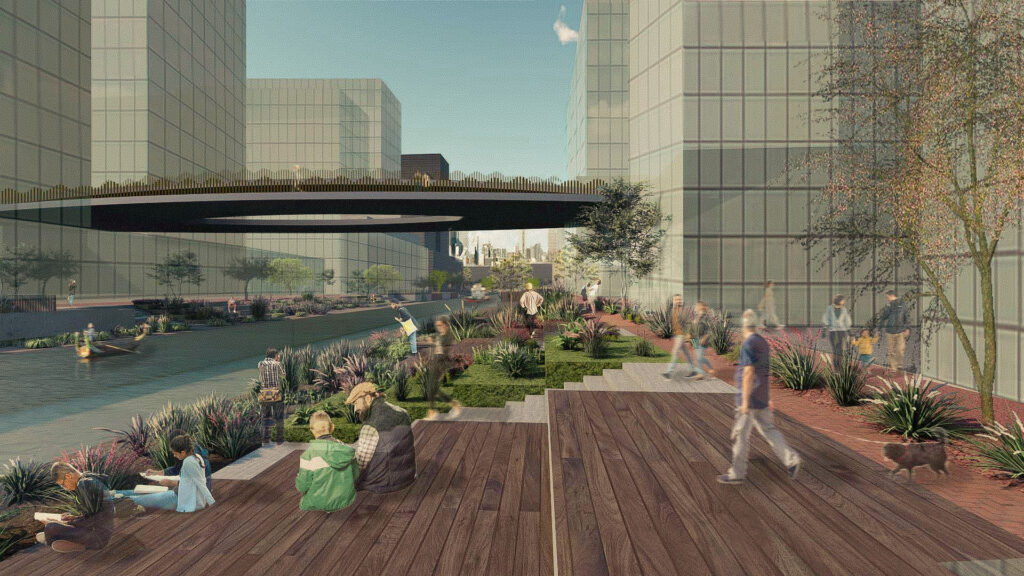
Introduction
Located in the Eastern part of the United States of America, in what is known as the New York City Metropolitan Area. Found in the Borough of Brooklyn, Gowanus is a neighborhood that surrounds what is known as the Gowanus Canal. Currently a mainly Industrial Area undergoing a rezoning plan, the neighborhood is facing imminent social, ecological and economical threats.
Mannahatta
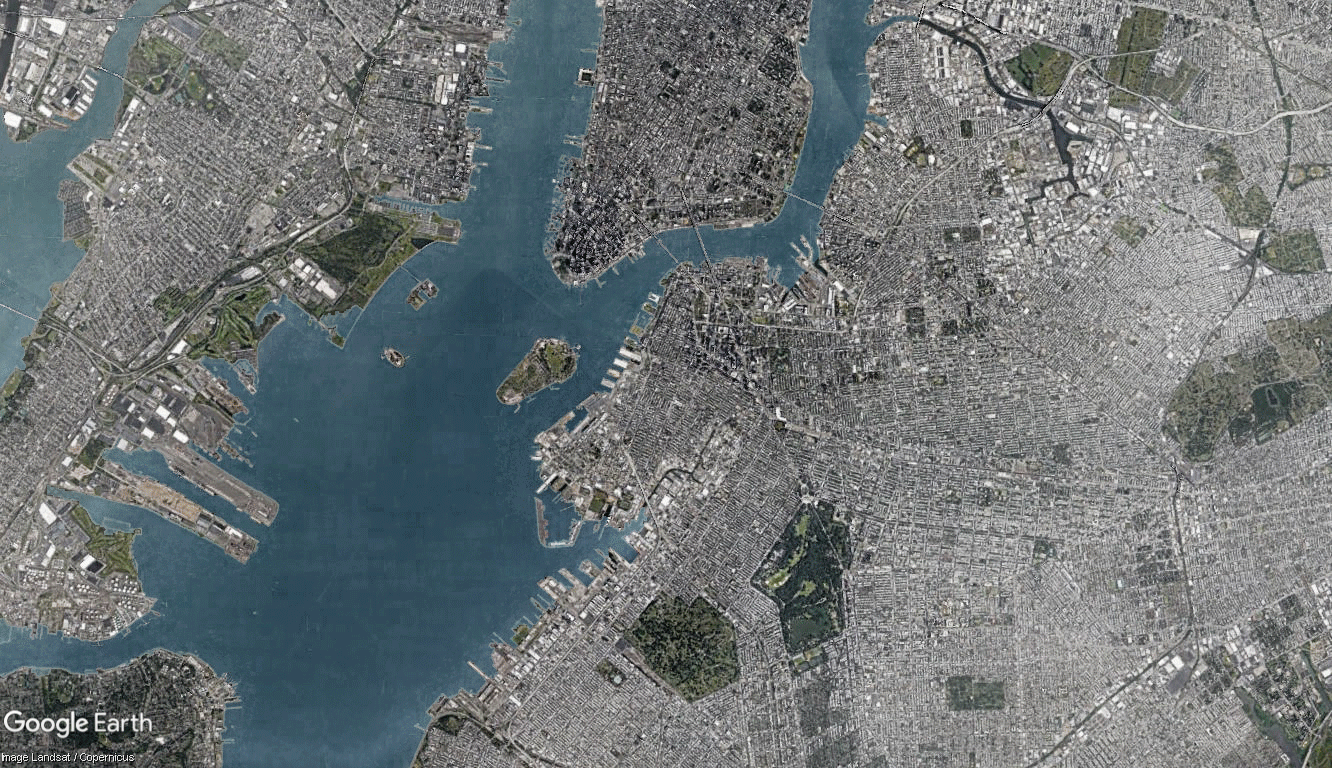
In order for us to understand how our current relationship with water came to be, we must know what was there before humans. Mannahatta was a place filled with a diversity of species, wealth in nature, and according to researchers, the home to over 55 ecosystems. This is what we now know as New York City, home to 8.85 million people.
Gif elaborated by D.MX1 Team. Information from https://welikia.org/
Context
According to the flooding zones projected for the end of the 2020’s, 2050’s and the worst case scenario of a Hurricane, referencing the consequences from Hurricane Ida in 2021. The entire neighborhood will be underwater, sooner rather than later.
If we return to the original Mannahatta shoreline, we can clearly see that a large part of what is being flooded did not exist in the first place, and as we know water has a memory. It wants to come back to where it once was.
The canal is surrounded by Industrial lots, mainly manufacturing companies, as well as a wide range of concrete plants, warehouses, parking lots and empty lots.
For many years, it served as dumping grounds for industrial waste, resulting in it being one of the nation’s most contaminated water bodies. It is now categorized as not fit for human consumption and as a Superfund site, meaning it’s polluted with hazardous contaminants and requires a long term response focused on cleaning.
The streets surrounding the canal have a high amount of housing and the presence of commerce in the form of store fronts. It’s a high rent zone, as is most of the greater New York area.
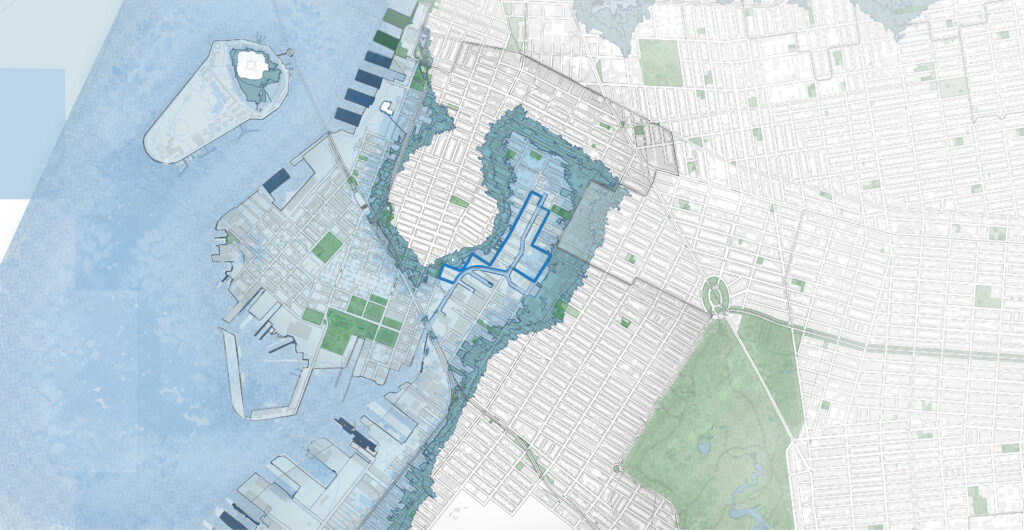
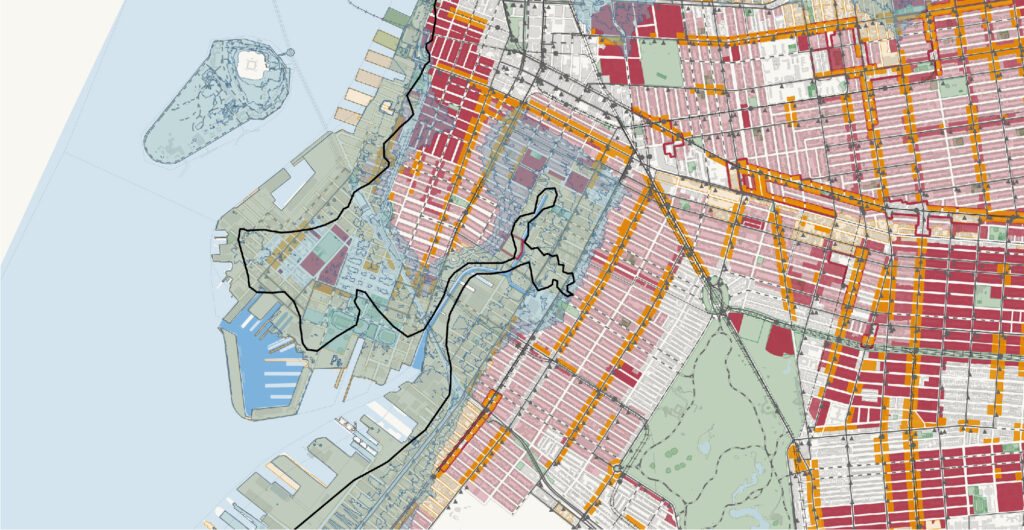
Gowanus Rezoning
Currently, the New York City Government is working on a rezoning plan which most citizens are unyieldingly fighting to stop. It will increase in water demand, with an addition of over 20,000 residents, and it’s currently delaying the deep cleaning of the canal.
Mixed use buildings, Waterfront Access Plan, a corridor along 4th avenue and Industrial and Commercial Buildings are making their way into the future of Gowanus. A fast gentrification is bound to happen, which will result in an increased demand of resources that we lack of. The people of Gowanus and their organizations are raising their voices to keep this from happening, but it already started. Now, the objective is to keep a healthy and improved Gowanus.
What is the future going to look like in this neighborhood?
Urgency vs. Importance
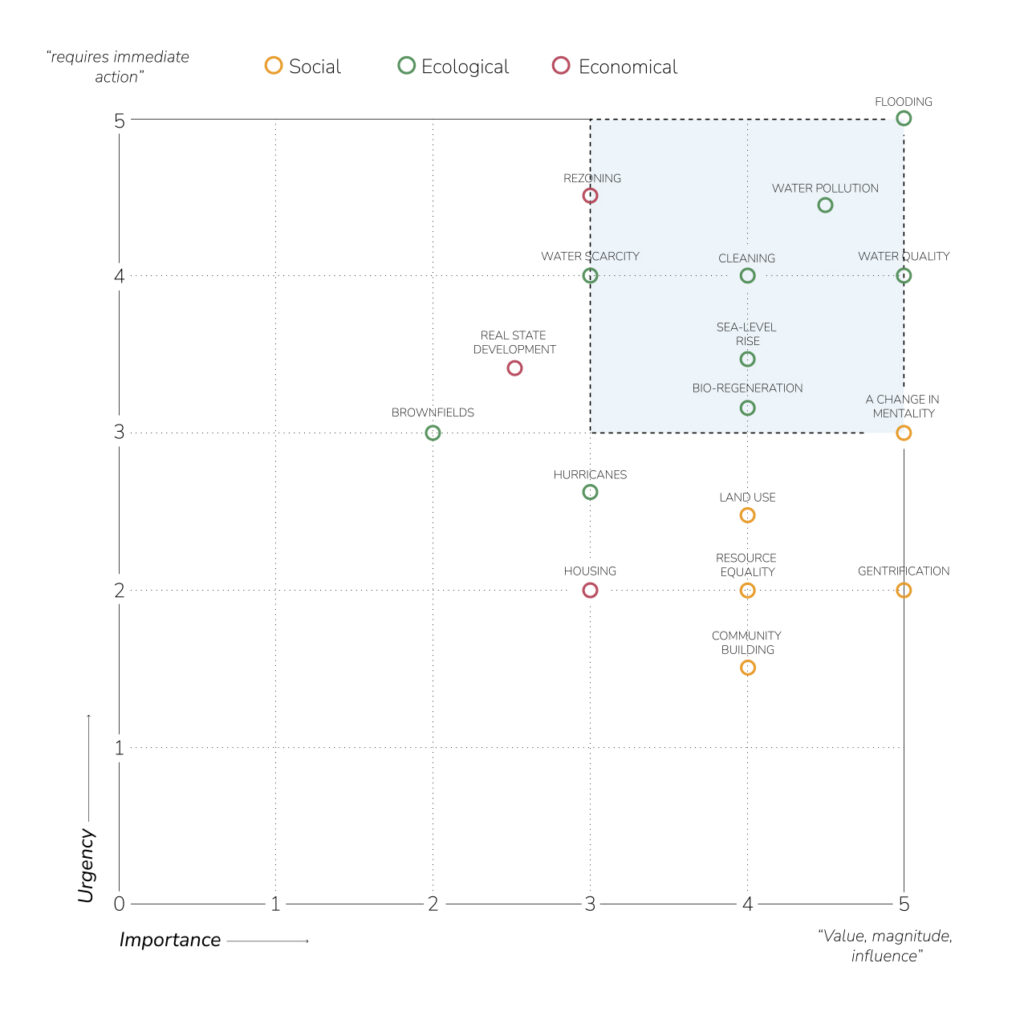
We identified the problems and situations happening in Gowanus. By classifing them in Social, Ecological and Economical, we were able to compare them using two key factors, importance and urgency. Defining importance as value, magnitude or influence this issue has or will have in the future. And urgency, understanding that the matter requires immediate action. The most urgent and important situation is flooding, followed by the cleaning of the canal. For this to create a real change we must change the value of water.
Diagram elaborated by D.MX1Team
Steps towards regeneration
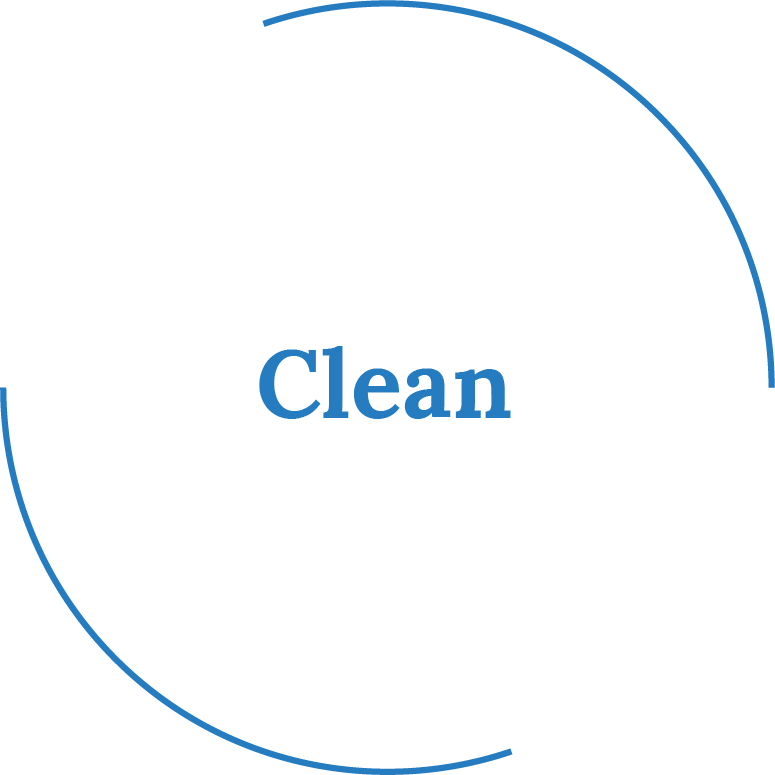


Main problems
How can we ensure a resilient neighborhood to pollution and sea level rise while improving quality of life and creating community through nature based solutions and instilling new daily habits in the people of Gowanus?
Our solution
We are proposing a holistic revitalization of an ecosystem along with its built environment with the use of chinampas and a green corridor to aid a community who is willing to fight for a better life. Water will be cleaned and filtered to later be used by the locals to flush toilets, ease the laundry water demand or to maintain public spaces. Water will be retained when rain comes to ease the flooding, and food will be grown, providing the possibility for allotments further down the line. All three typologies will be walkable and accessible enabling educational exchange. We followed 4 principles to place the chinampas:
- the direction of water currents
- the width of the canal
- the rezoning program
- water traffic
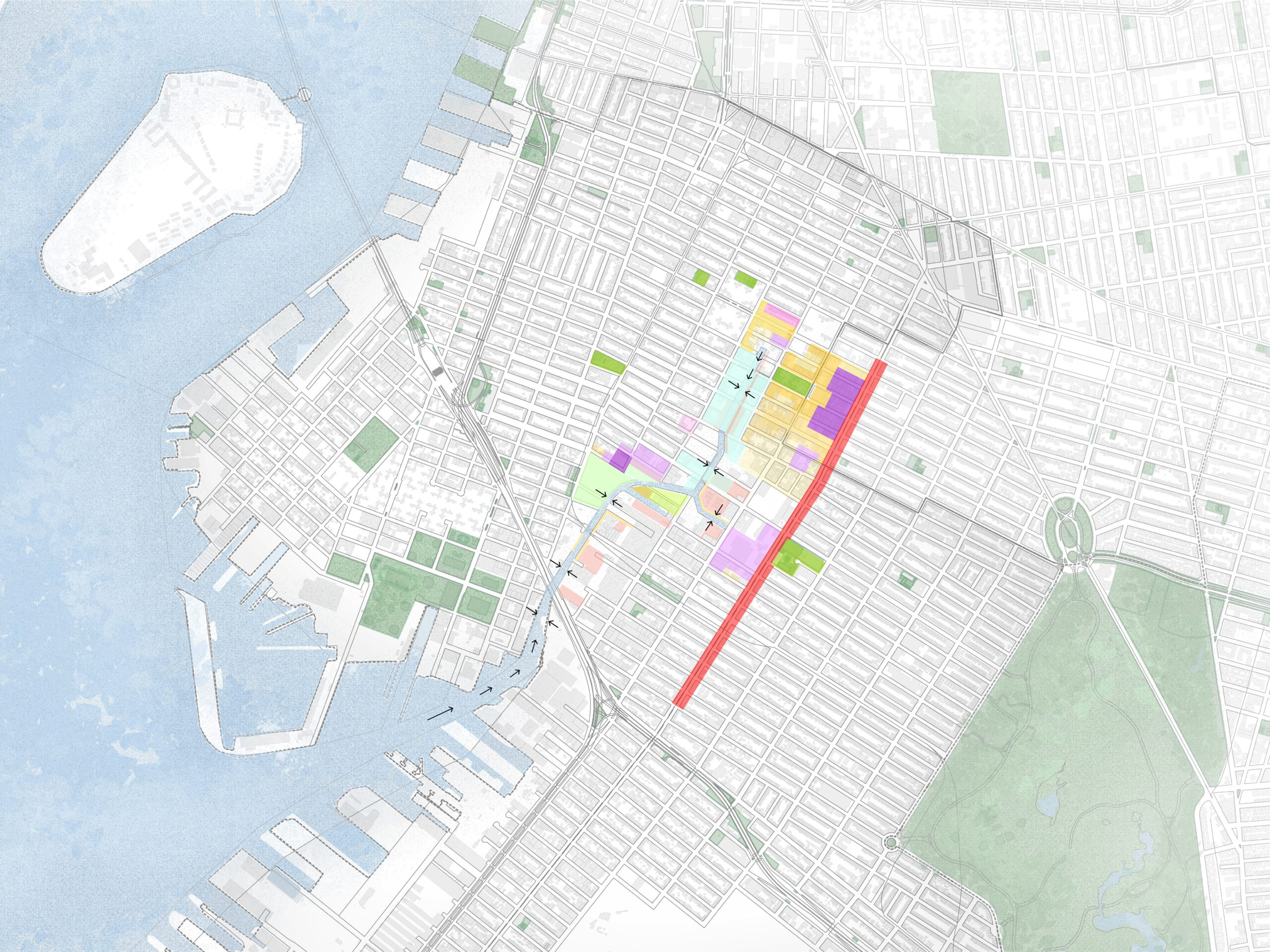
Map elaborated by D.MX1 Team. Information from nyc.gov. Coordinate system: WGS84(DD)
Chinampas will be managed by local organizations like The Gowanus Preservation Society, Gowanus Community Fridge, Voice of Gowanus, the Gowanus Dredgers Canoe Club, among many others, which will also have an area to work, teach and promote their mission of making a better Gowanus for all, the NGO’S Center located at the center of the canal.
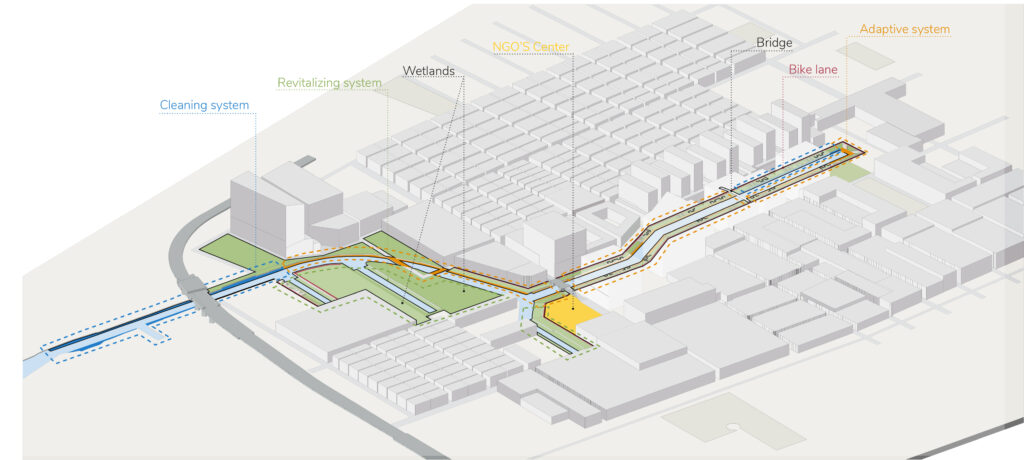
The corridor will act as an extension of the retention chinampa along its 3 kms of length, being floodable whilst providing a space to learn and connect with nature in the midst of the city’s chaos.
Conscious Water Based Ecosystem
The three steps also represent the three scales: individual, collective and systemic.

Chinampas
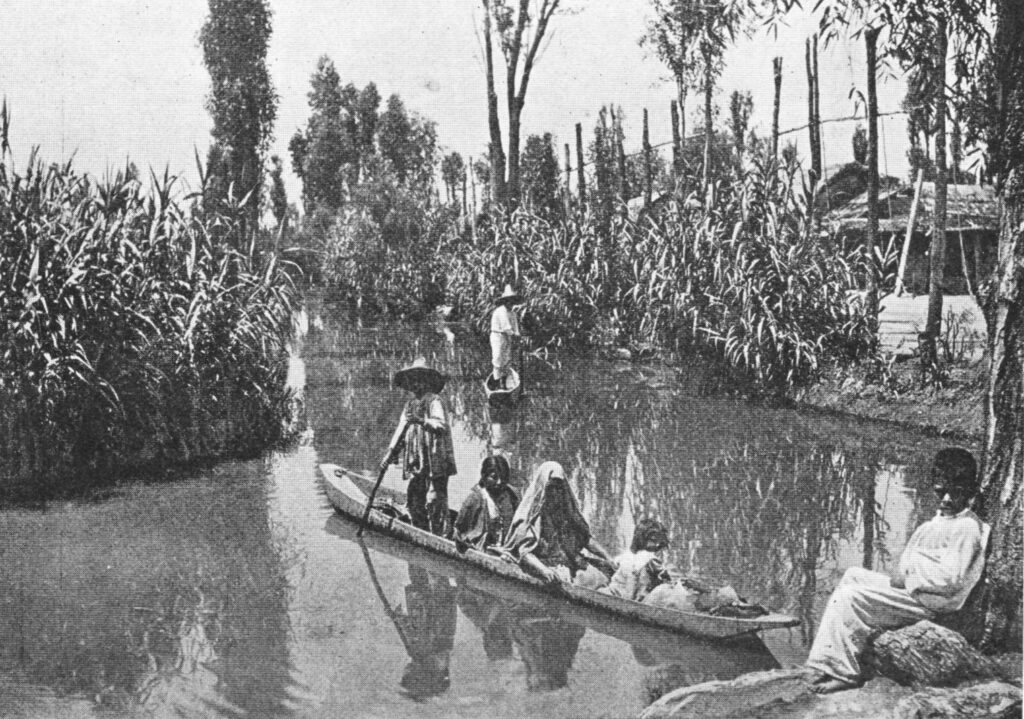
We are going back to our roots and taking a traditional approach with the structure developed by Mexicas in the form of Chinampas. Traditionally built in areas where water is the main natural resource and rain is not enough to provide food security, this method of agriculture built with local materials acted as a biofilter that cleaned the water of the canals.
Composed of mud and decaying plants, this results in a system that maintains the health of the ecosystem by preventing waste from polluting the water supply, all while using local materials and techniques.
Currently 20,000 chinampas are found in Mexico City, covering an area of 30,348 acres and producing around 19 tons of food anually.
We modify this technique to clean, adapt and revitalize water.
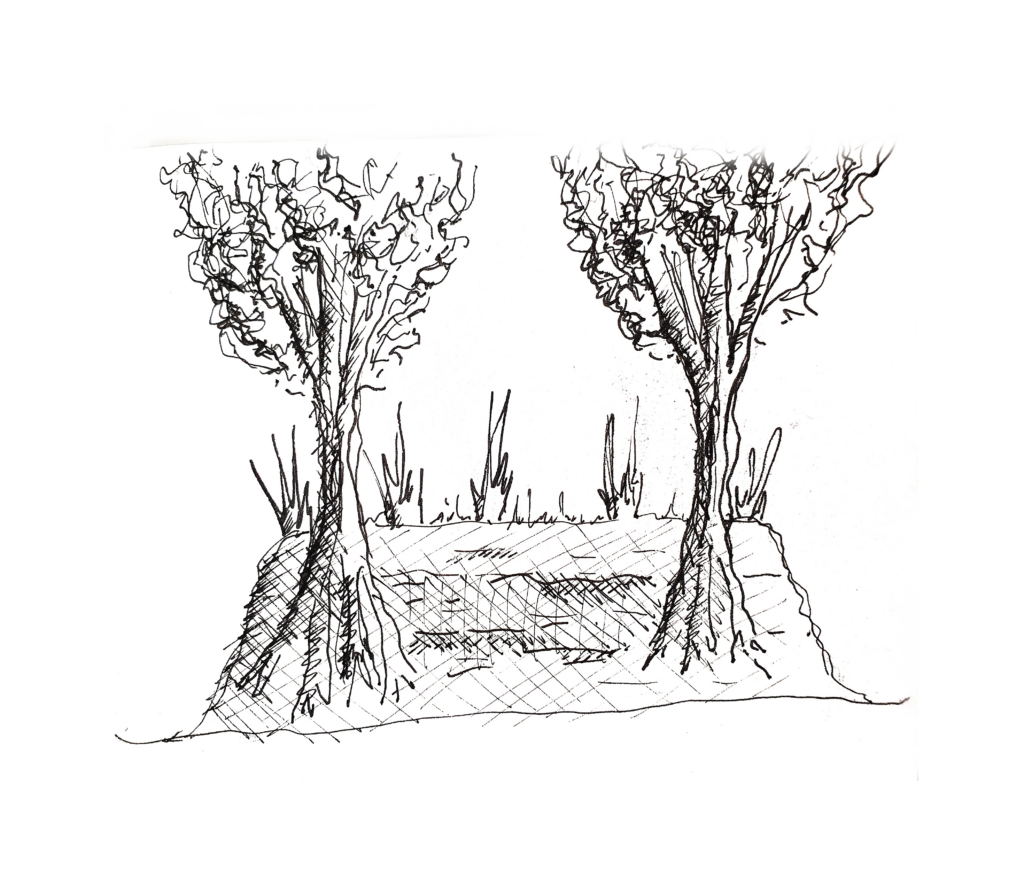
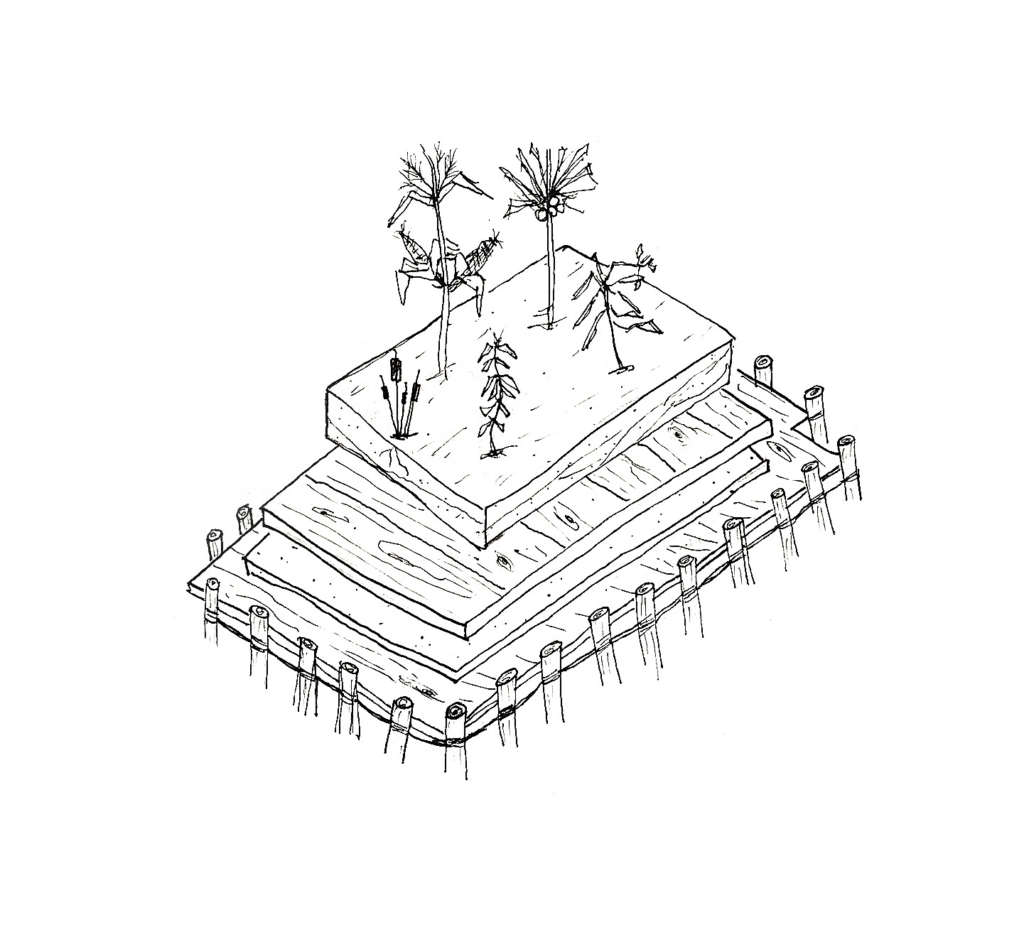
Cleaning Chinampa
The Cleaning chinampa will work with four types of filtration systems: oysters, sand filters, endemic plants, and enzymes and bacteria. Each of these responds to a specific contaminant found in the canal water.
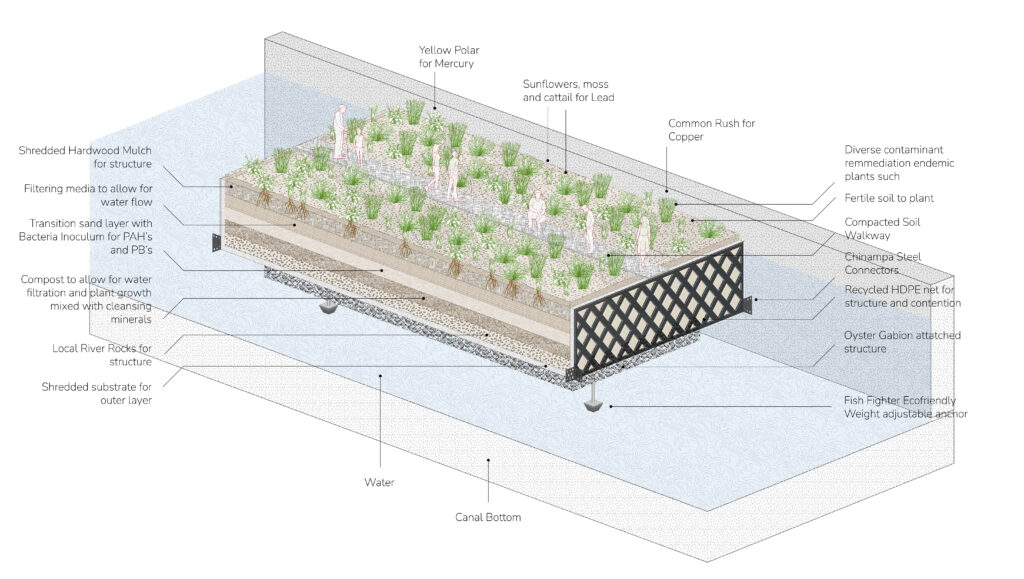
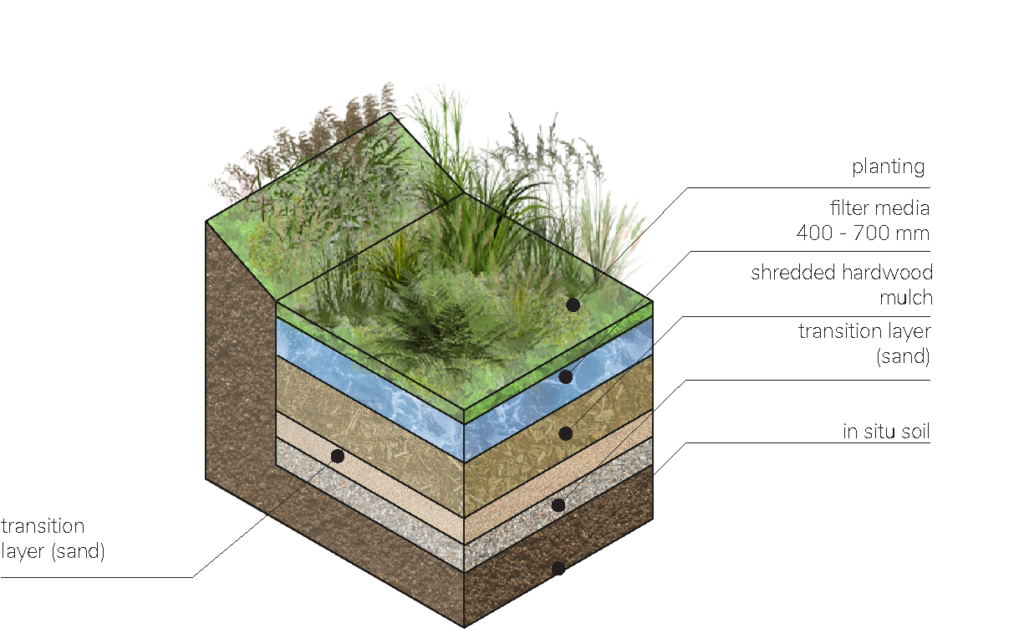
The Cleaning chinampa will work with four types of filtration systems: oysters, sand filters, endemic plants, and enzymes and bacteria. Each of these responds to a specific contaminant found in the canal water. For enzymes and bacteria, microrganisms that are found in soil and moss, which are enhanced by activated sludge, such as Rotifers and Protozoa will be used.
Biofiltration Sytem Section. Diagram elaborated by D.MX1 Team. Information from: Melbourne Water

Retention Chinampa
The Adaptive chinampa will work along with a green corridor that surrounds the canal. Proposing new Green Infrastructure in collaboration with real estate developers.
They will work as wetlands that harvest and retain rainwater to prevent floods.
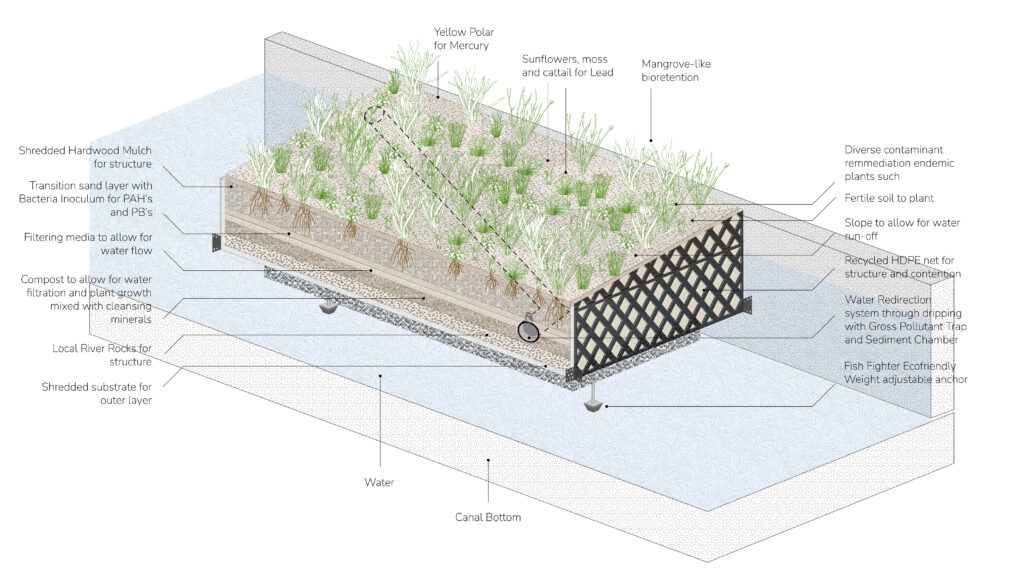
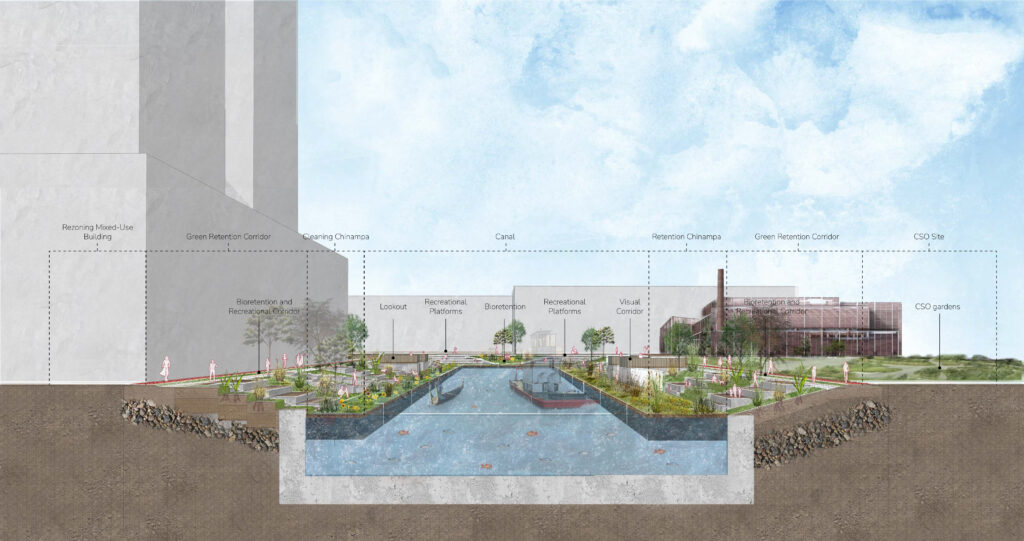
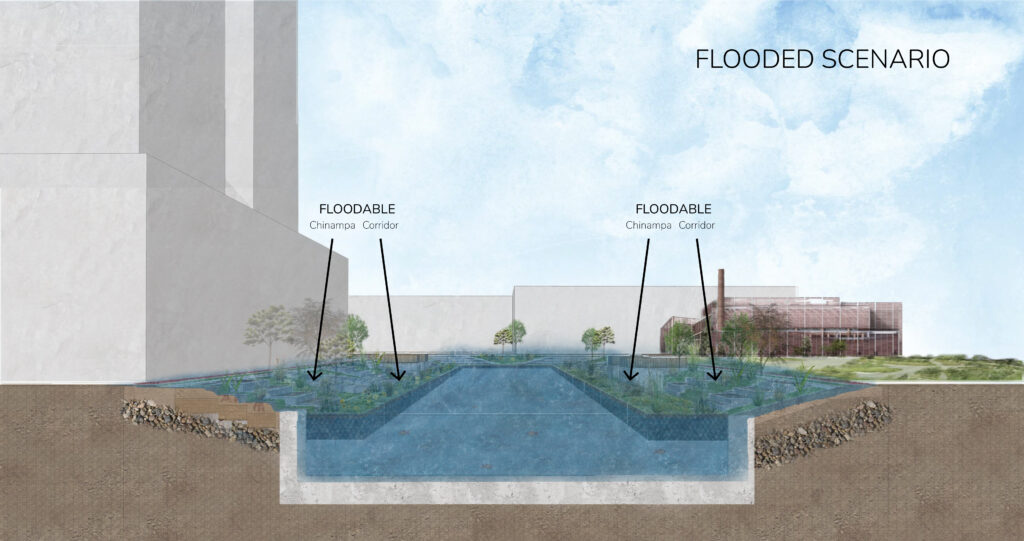
Revitalizing Chinampa
The Revitalizing chinampa will attend to the increased demand for food. The crops that will be grown on them are: apples, asparagus, beans ,beets, blackberries, blueberries ,broccoli, brussel sprouts, cabbage, cherries, cauliflower, corn, cucumbers, eggplant, grapes, kale, lettuce, melons, onions, peas, peppers, potatoes, pumpkins, radishes, rhubarb, spinach, strawberries, squash, tomatoes, turnips, zucchini.
The rotation of crops is extremely important to have healthy soil and a sustainable agricultural practice. This crops will feed the people who need it, managed by the “Gowanus Community Fridge” organization, which aims to feed for free by placing refrigerators along the neighborhood for people to take from them.
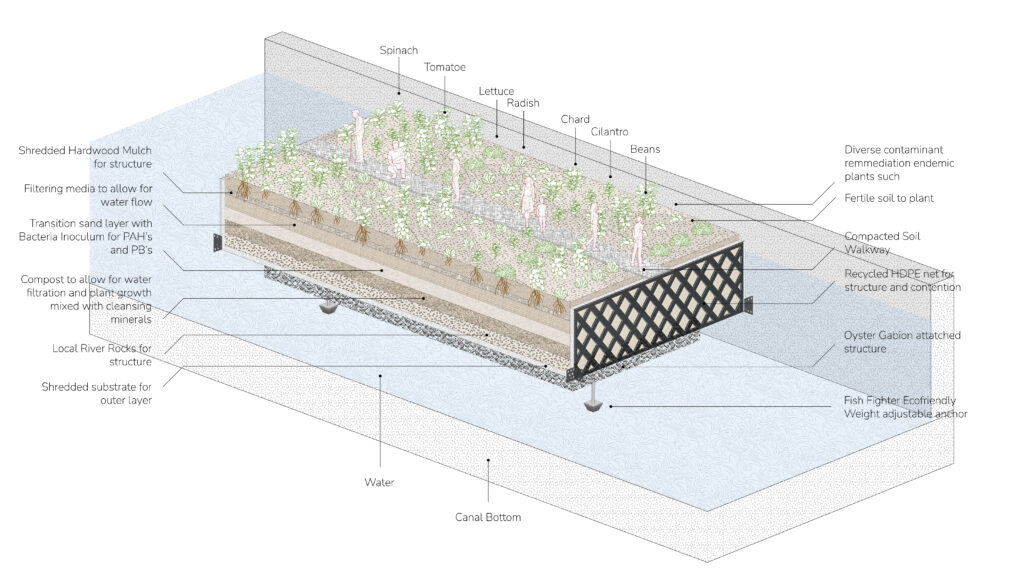
Business Model
The project will be financially supported by Pay for Success, which is an investment mechanism that pays back investors when the project succeeds based on the compliance of certain metrics through an external evaluation.

A regenerative water cycle that recognizes the true value of water.
“Profit is not the same thing as the common good“
Christiana Z. Peppard
This motivates investors to be involved with the project and its objectives, which in this case will be the developers of the rezoning.
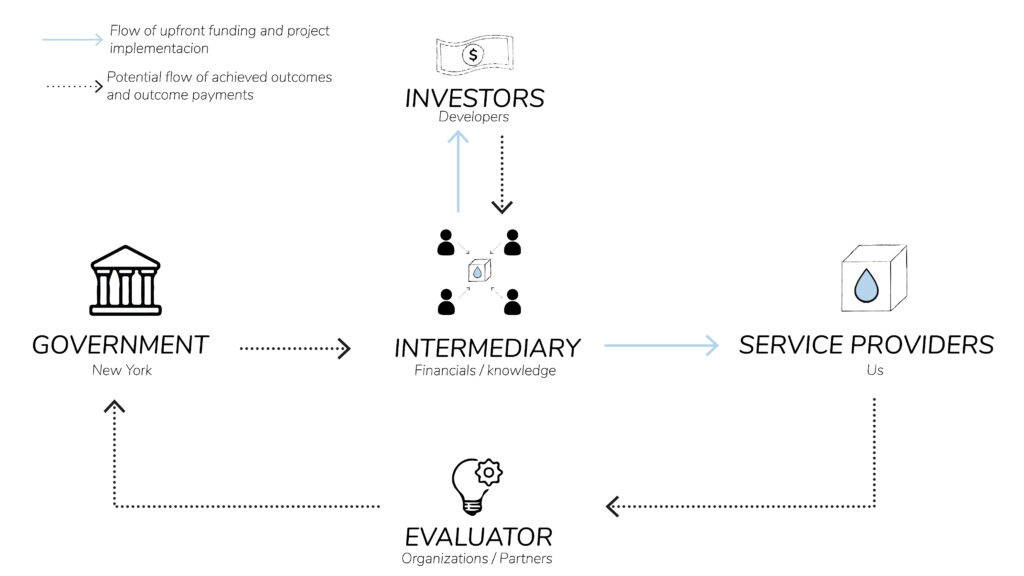
By prioritizing proven outcomes, management, and the strategic deployment of resources, Pay For Success can improve how programs develop with the people, yielding positive benefits to individuals, governments, and society at a collective scale.
Water Holders
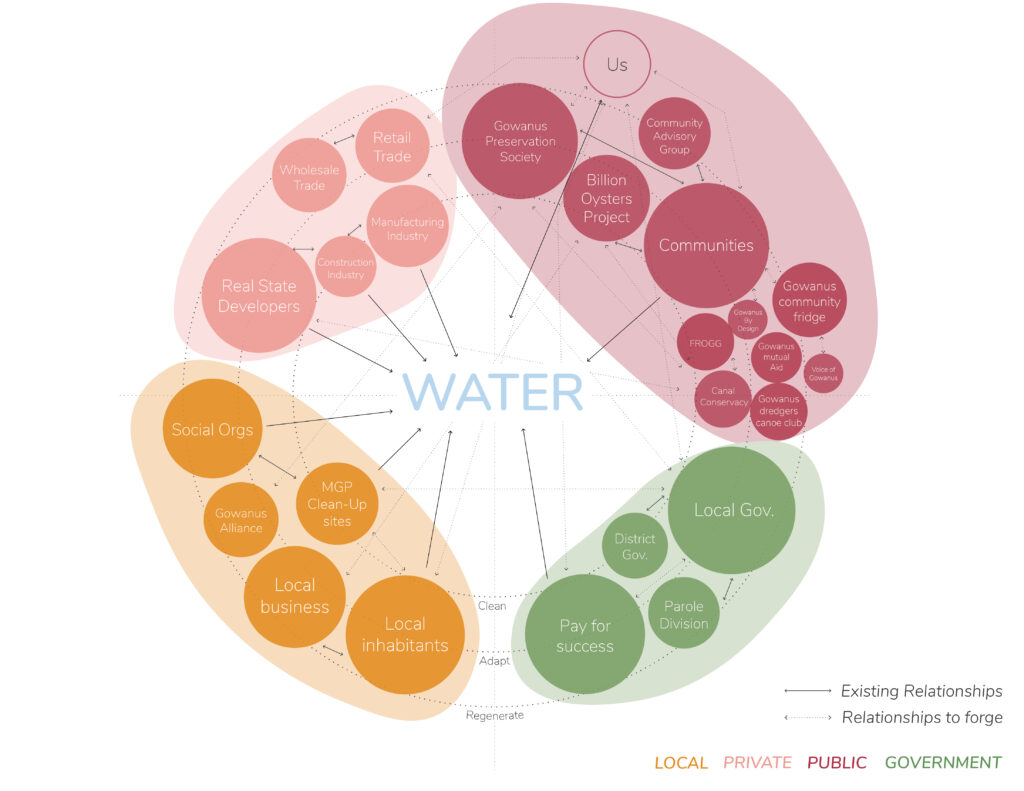
For our project to be viable, we’ve classified all the organizations, industries and people who are related and thereby affected by the project. There are four sectors: private, public, local and governmental.
- PRIVATE: the investors, the real estate developers.
- LOCAL: Gowanus’ organizations dedicated to preserve itt and provide a better environment for the growth of the people.
- GOVERNMENT: local government, the district government and the Canal Conservancy Group (CAG). They are key in the development of pay for success.
- PUBLIC: us, the community, the NGO’s.
Gowanus ONG’s
Actors we consider could be potential partners in the implementation, development and success of the project.
- Voice of Gowanus – Coalition of community citizens and organizations
- Gowanus Canal Community Advisory Groups (CAG) – works with the EPA (Environmental Protection Agency) to create a space for dialogue between representatives of all segments of the community regarding the Superfund clean-up of the Gowanus Canal and other related issues of concern to the community
- Gowanus Landmarking Coallition – group of Gowanus residents, neighborhood organizations, local businesses, and city organizations who advocate for city landmark designation for key historical, architectural, and cultural sites prior to neighborhood rezoning.
- Gowanus Canal Conservancy– Non-profit organization dedicated to facilitating the development of resilient, vibrant open space
- Gowanus Community Fridge – Community Fridges
- Gowanus Dredgers Canoe Club – dedicated to Gowanus Canal cleanup, waterfront access, arts and education
- Gowanus Mutual Aid – Neighbors helping neighbors
- FROGG: Friends and Residents of Greater Gowanus – working towards an eco-safe and healthy Gowanus Canal corridor and watershed, incluiding restoration of the natural environment
- Billion Oyster Project – restoring oyster reefs to New York Harbor through public education initiatives
Measurability
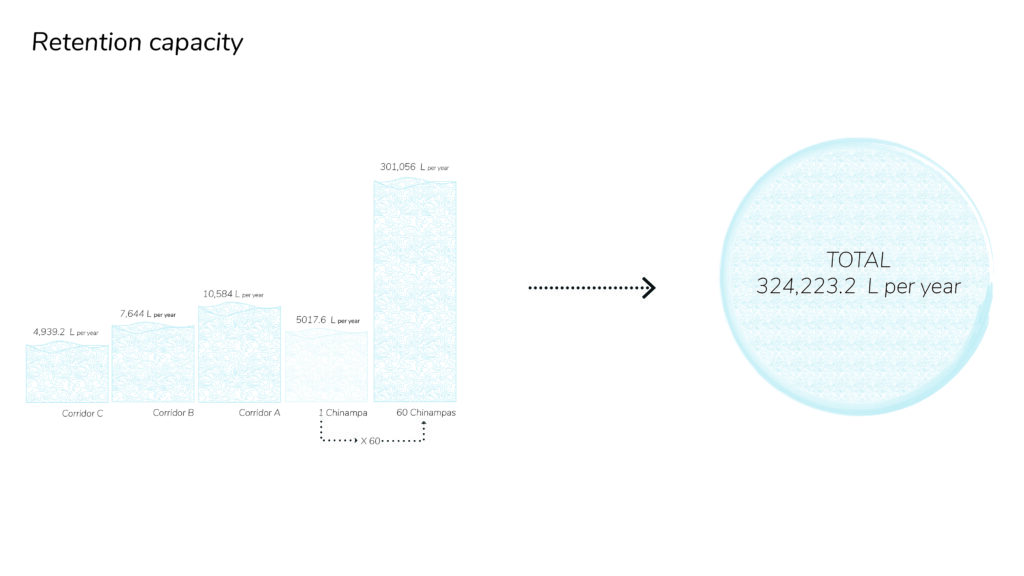
The measurability of the project will be established, not only on the positive impact this project will have on the people who inhabit Gowanus, but also in the amount of water cleaned, retained and redirected. This is an assurance of the mitigation of the main problems. Some biological indicators that allow not only us and the evaluators but the community to see that the ecosystem is being restored will be the return of endemic species such as: oysters, shad, sturgeon, brook trout, otters, beavers, mink and bears. The cleaning microorganism act also as bioindicators, the healthier the water the more protozoa can be found. The cleaner the water, the more species, flora and fauna can develop, thus, more life is restored.
Replicability
Sea level rise, water scarcity and flooding are issues that are affecting and will affect many neighborhoods and cities. In 2050s, 36 cities will be underwater, and we must find opportunity in this challenge. Understanding the replicability of our proposed solution, not only the Gowanus Community can be benefited from this approach.
Understanding that every context is different, the proposed ecosystem can adapt and improve existing built environments and situations. This methodology will allow people to see a new way of living with water, a different approach to how we have been relating with our environment.
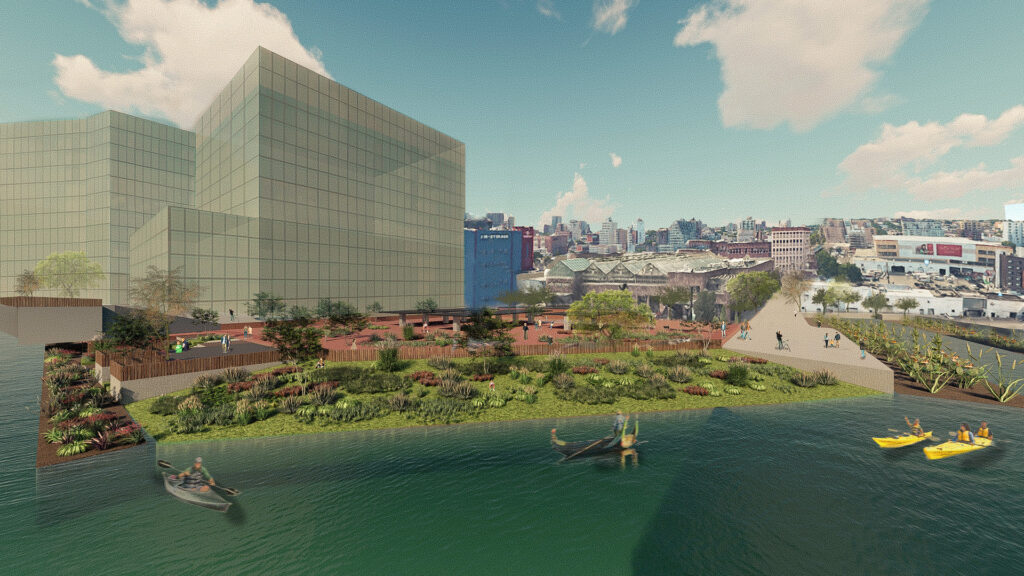
We want to give the people of Gowanus a new chance at a better space, a happier community and a fuller life. Inspired by historic environments, this systemic regeneration of an ecosystem will allow us to fulfill this objective with the help of chinampas, a community-building green corridor and a newly formed water cycle, understanding the true value of water.
This is the start of being On Water.
Team D.MX1
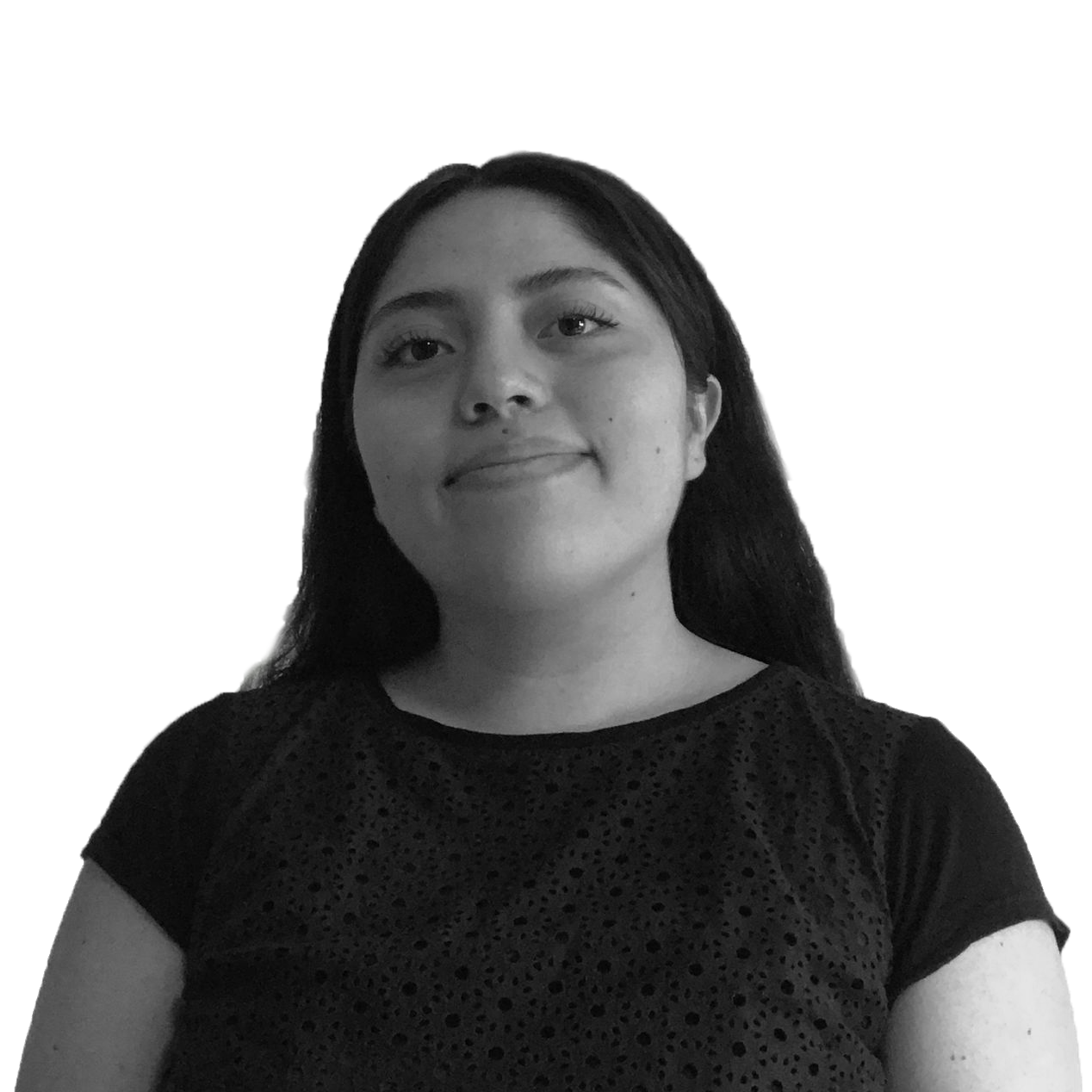


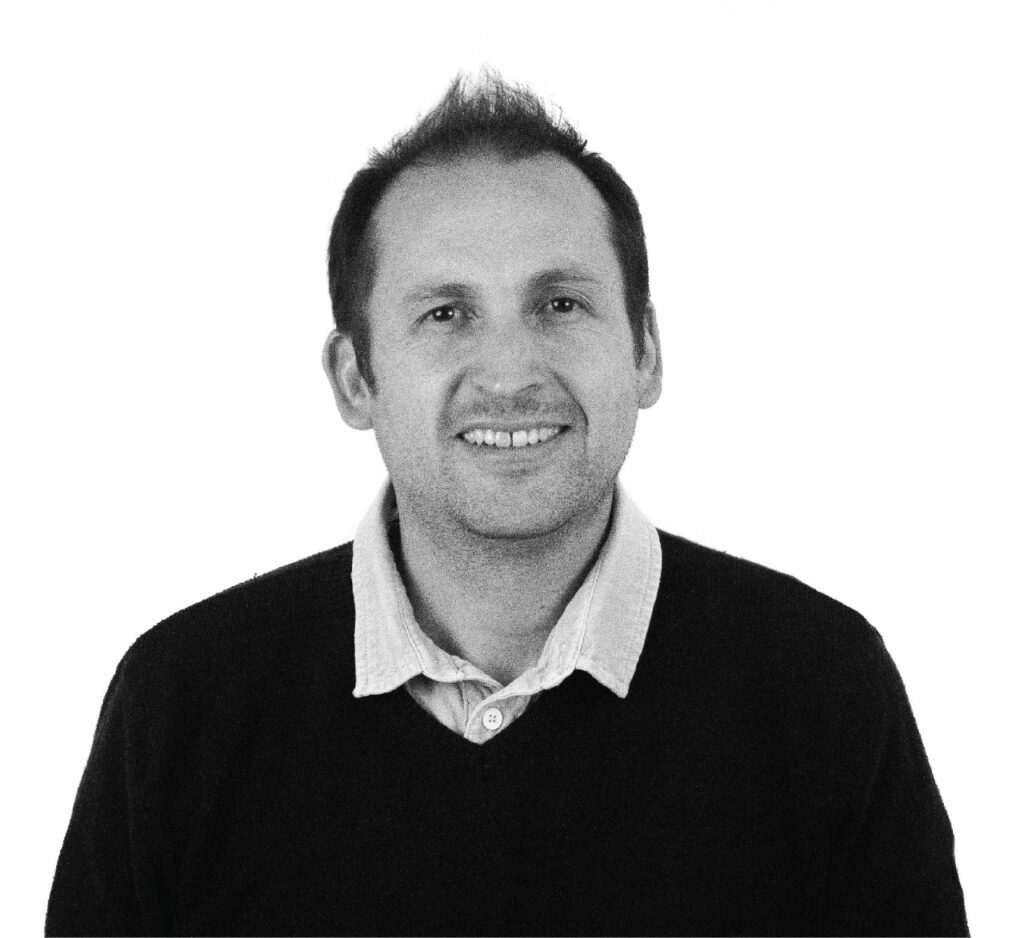

References
